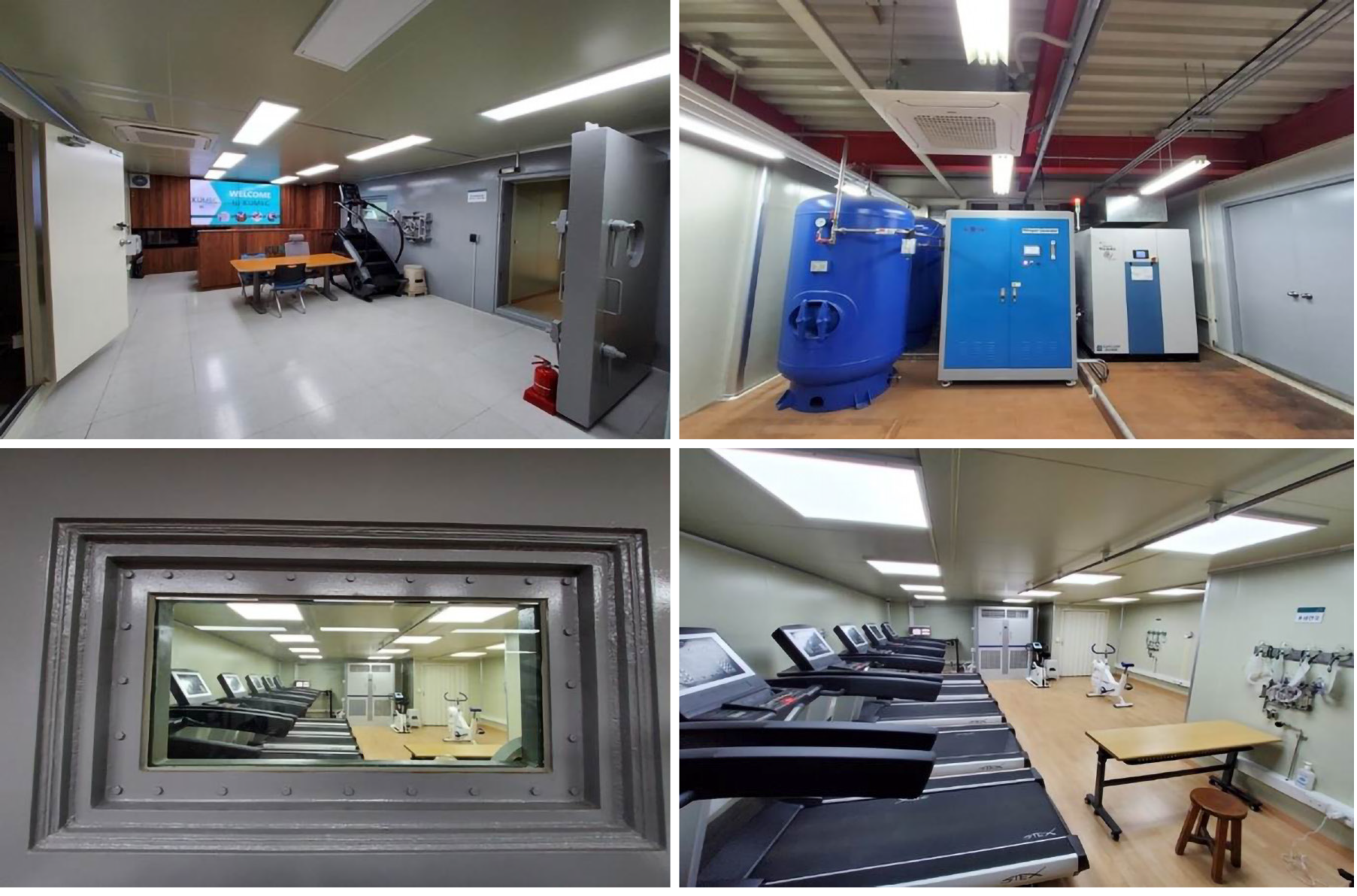Copyright
©The Author(s) 2021.
World J Diabetes. Apr 15, 2021; 12(4): 331-343
Published online Apr 15, 2021. doi: 10.4239/wjd.v12.i4.331
Published online Apr 15, 2021. doi: 10.4239/wjd.v12.i4.331
Figure 1 Effect of hypoxic exposure on the physiological response to exercise.
Exposure to hypoxic conditions is a new intervention method for health-promotion and for preventing or treating chronic diseases by improving body weight, cellular metabolism, and cardiovascular and respiratory function. HIF-1: Hypoxic inducible factor-1; VEGF: Vascular endothelial growth factor; GLUT-4: Glucose transporter-4; Hg: Hemoglobin; O2: Oxygen; CO: Carbon monoxide; C2: Carbon dioxide; Sa2: Arterial oxygen saturation.
Figure 2 Environment control chamber.
Various technical equipment has been developed to create hypoxic conditions. Artificially produced hypoxia can be obtained by changing barometric pressure (hypobaric hypoxia) or by changing the fraction of oxygen (FiO2) (normobaric hypoxia). The FiO2 is always constant at sea level (FiO2 ca. 21%), and the barometric pressure decreases with higher altitude. The hypoxic conditions can be created using a special chamber at rest or during exercise.
- Citation: Kim SW, Jung WS, Chung S, Park HY. Exercise intervention under hypoxic condition as a new therapeutic paradigm for type 2 diabetes mellitus: A narrative review. World J Diabetes 2021; 12(4): 331-343
- URL: https://www.wjgnet.com/1948-9358/full/v12/i4/331.htm
- DOI: https://dx.doi.org/10.4239/wjd.v12.i4.331














